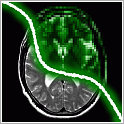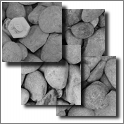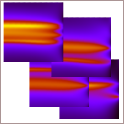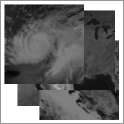Curiosity Cloning - Neural Modelling for Image Analysis

Is it possible to detect the scientific curiosity from human brain activity? If so, can we then teach to a computer to exhibit a similar behaviour?
Motivation
Imagine a planetary rover having a vivid scientific curiosity and thus autonomously selecting the scientifically valuable data that are worth to be analysed by scientists back on Earth. Imagine such a rover to be programmed to exhibit curiosity patterns cloning those of particular human beings. Back on Earth, we would select from a menu the name of some famous scientist and upload his 'curiosity module' on board the rover. The rover would then exhibit naturally inquisitive behaviour by imitating the selected scientist's scientific curiosity when selecting the experiments to be performed or the direction to explore.
Curiosity Cloning - Neural Modelling for Image Analysis study aims to be the first step towards realising this daring vision. In order to create artificial models of human curiosity, a large amount of training data will be undoubtely required. Such training data would consist of sample images associated with information about the amount of scientific interest they present to the subject. However, it is rather evident that presenting large numbers of images to someone and asking him to express his opinion is too troublesome and time-consuming. Is there a way to tackle this problem?
A possible solution may be to directly monitor the subject's brain activity during a fast visual presentation of images and classify the subject's brain waves. Starting from the assumption that a higher attention level stimulated by curiosity can be detected in the P300 brain wave, this study aims at studying the following questions:
- Up to what image presentation speed is the detection and quantitative analysis of brain waves reliable?
- Can we discriminate between different types of curiosity?
- Can we use the P300 to build a probabilistic ranking of the most interesting images as percieved by the subject?
Experiment I (Reliability vs. Speed)

Download Experiment I image set
Experiment II (Beyond the Oddball paradigm)

Download Experiment II image set
Experiment III (Scientific Curiosity)

Download Experiment III image set
Final DEMO at ESTEC
CCViewer
In order to meet the needs of experiments conducted during the study, which involve display of the visual stimuli, the Advanced Concepts Team has developed a high-fidelity image display software, named Curiosity Cloning Image Viewer. The program takes advantage of modern multimedia technologies to achieve unprecedented display timing accuracy. The software is freely available to everyone, as it has been released as an open-source project, under the BSD license. If you would like to obtain either the source code or a binary release or the User's Manual, you will find them under the following addresses:
CCViewer Project Page on SourceForge
Credits
The study was proposed under the [Ariadna Call 2008/01](/doc/ARI/ARI Call doc/Study descriptions/ARI_study_08-8201.pdf) and was carried out by the Advanced Concepts Team in cooperation with the Multimedia Signal Processing Group of the Swiss Federal Institute of Technology and the School of Computing of the Dublin City University. Following is the list of the researchers participating in the study.
- Dario Izzo
- Luca Rossini
- Christos Ampatzis
- Marek Ruciński
Multimedia Signal Processing Group, EPFL
- Touradj Ebrahimi
- Ashkan Yazdani
- Alan Francis Smeaton
- Peter Wilkins
- Graham Healy
References
- Izzo, D., Rossini, L., Rucinski, M., Ampatzis, C., Healy, G., Wilkins, P., Smeaton, A.F., Yazdani, A., and Ebrahimi, T., "On the EEG footprint of image saliency", Internal report of the project, 2008. (link)
- Izzo, D., Rossini, L., Rucinski, M., Ampatzis, C., Healy, G., Wilkins, P., Smeaton, A.F., Yazdani, A., and Ebrahimi, T., "Curiosity CLoning: neural analysis of scientific knowledge", Proceedings of the International Joint Conference on Artificial Intelligence 2009, Workshop on Artificial Intelligence in Space, 2009. (link)